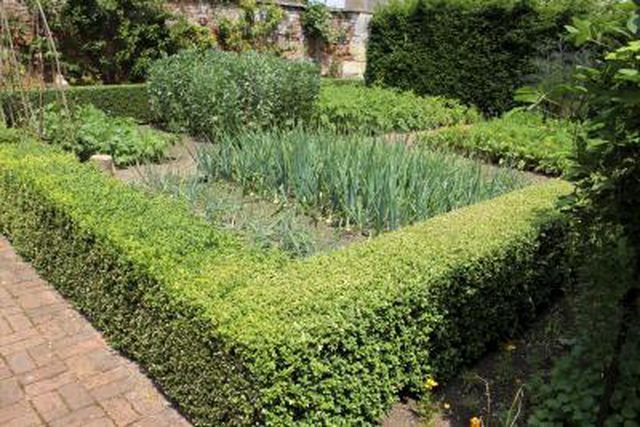Bulbs
Flower Basics
Flower Beds & Specialty Gardens
Flower Garden
Garden Furniture
Garden Gnomes
Garden Seeds
Garden Sheds
Garden Statues
Garden Tools & Supplies
Gardening Basics
Green & Organic
Groundcovers & Vines
Growing Annuals
Growing Basil
Growing Beans
Growing Berries
Growing Blueberries
Growing Cactus
Growing Corn
Growing Cotton
Growing Edibles
Growing Flowers
Growing Garlic
Growing Grapes
Growing Grass
Growing Herbs
Growing Jasmine
Growing Mint
Growing Mushrooms
Orchids
Growing Peanuts
Growing Perennials
Growing Plants
Growing Rosemary
Growing Roses
Growing Strawberries
Growing Sunflowers
Growing Thyme
Growing Tomatoes
Growing Tulips
Growing Vegetables
Herb Basics
Herb Garden
Indoor Growing
Landscaping Basics
Landscaping Patios
Landscaping Plants
Landscaping Shrubs
Landscaping Trees
Landscaping Walks & Pathways
Lawn Basics
Lawn Maintenance
Lawn Mowers
Lawn Ornaments
Lawn Planting
Lawn Tools
Outdoor Growing
Overall Landscape Planning
Pests, Weeds & Problems
Plant Basics
Rock Garden
Rose Garden
Shrubs
Soil
Specialty Gardens
Trees
Vegetable Garden
Yard Maintenance
How to Care for Box Hedges
How to Care for Box Hedges. With small leaves and a dense, slow-growing habit, boxwood (Buxus spp.) is a popular hedge plant. Box hedges require regular pruning to maintain their shape, in addition to the care required by all boxwood plants. The boxwoods are hardy in U.S. Department of Agriculture plant hardiness zones 4 through 9, depending on the...

With small leaves and a dense, slow-growing habit, boxwood (Buxus spp.) is a popular hedge plant. Box hedges require regular pruning to maintain their shape, in addition to the care required by all boxwood plants. The boxwoods are hardy in U.S. Department of Agriculture plant hardiness zones 4 through 9, depending on the species. In the coldest zones, the foliage may experience winterburn and turn yellowish-brown.
Fertilizer Requirements
Boxwoods have low fertilizer needs. Apply a dry fertilizer with a nitrogen-phosphorus-potassium ratio of 10-10-10 at a rate of 1 pound per 100 square feet once a year. Spread fertilizer evenly over the planting area, but keep it at least 6 inches from the base of the plant to prevent root burn. The best times to make this fertilizer application are in late fall, winter or early spring before new growth develops. In areas with cold winters that may damage boxwood leaves, fertilizing in the fall can help prevent leaf dieback.
Watering Needs
Water newly planted boxwoods weekly during the hottest months of the summer for the first two years. They are shallow rooted, and should be mulched to help keep water from evaporating and prevent the roots from drying out. After plants are established, and in cooler weather, water to supplement rainfall so boxwood receive about 1 inch of water per week. Since boxwoods are broadleaf evergreens, they lose moisture through their leaves during the winter and should be watered as long as the soil doesn't freeze. Be sure that the boxwoods are growing in well-drained soil that stays moist but not soggy, since standing water promotes root rot.
Pests and Diseases
Boxwoods are susceptible to a number of pests and diseases. Symptoms of a condition known as boxwood decline can occur as a result of certain fungi, cold injury, lack of water or parasitic nematodes. It results in weak, spindly plants with dead branches and leaves that drop prematurely. The most important thing to do in response to this disease is keep the plant clean by pruning out dead branches and replacing the mulch each year. Removing dead leaves and branches also stops the spread of canker and stem blights. Potential pest problems include boxwood psyllid (Psylla buxi) and boxwood leafminer (Monarthropalpus flavus). These can be controlled by applying a carbaryl insecticide. For leafminers, apply in April or May when the adult flies are visible. Treat psyllids only when there's a heavy infestation. Mix a concentrated carbaryl insecticide at a rate of 1.5 ounces per gallon of water, then spray to thoroughly cover foliage and branches. You may repeat application up to six times per year.
Pruning Boxwood
Boxwoods should be pruned gradually, with no more than one-quarter of the plant removed in a year. Prune routinely to remove the oldest branches to open up the shrubs and increase air circulation. You can prune out dead, dying, injured or diseased branches any time, and you can perform regular pruning for shaping a box hedge any time of the year except the six weeks leading up to the first frost. For severe pruning, wait until early winter. Remember to disinfect pruning tools after use by soaking in a solution of 1 part bleach to 3 parts water for at least five minutes. If pruning diseased foliage, dip the pruning tools in a solution of 1 part bleach to 9 parts water in between cuts.